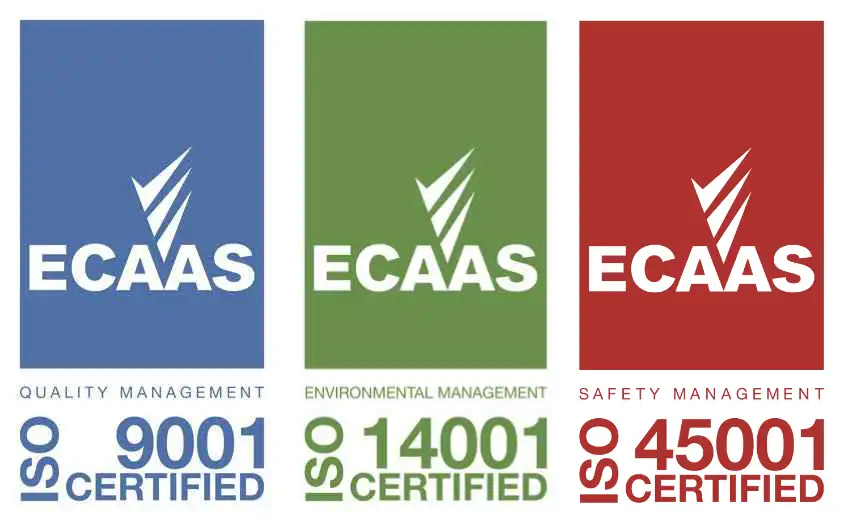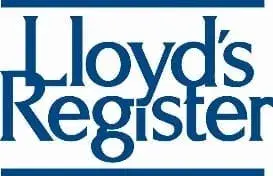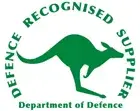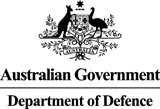Safety Training FAQs
General Safety Training FAQs
Where can I find the student handbook?
How do I enroll into a course?
Click on the course on the date you wish to attend on the calendar (https://zokal.com.au/annual-safety-training-calendar) , fill out all details and we will confirm your booking via email. Employers can also book multiple staff via the “Group Booking Enrolment” option after choosing the course/date. relevant nationally recognised units of competency.
Can training be completed in wet weather?
Yes. Zokal has 3 training rooms and an all-weather practical training area.
Can Zokal complete training on customers sites instead of at our training center?
Yes can complete all courses on your site. We require a room for the theory component and an adequate area for the practical. Alternatively, for the practical component we can bring our Mobile Training Simulator onsite.
What do we need to use the trailer on site?
We need a flat stable area when using the Mobile Training Trailer for training with relatively easy vehicular access. We will set up an exclusion zone around the unit, just like a normal work area for training.The trailer is: 6m long from tow hitch to rear doors, 2m wide and 2.5m high to the deck.
Can training be customised to suit our needs?
Yes. Zokal can contextualise training to your companies needs including timing to fit in with staff rosters.
What customers does Zokal currently provide training for?
Where do I park when arriving for training at Zokal
There is plenty of on street parking. Please respect our neighbours and don’t park in their spaces or driveways.
Can Zokal conduct weekend training?
We can conduct weekend group training, please call us to discuss and schedule.
What is a USI?
What do I need to wear to training?
Clean covered shoes and clothes. Please bring gloves to heights and confined space courses if you wish to use them.
Do I need to bring any safety equipment to the training?
Zokal provides all equipment needed for all training courses however you can bring your own equipment if you prefer. Note this doesn’t apply to gloves, please bring your own gloves if you want to use them.
Does Zokal provide smoko and lunch?
Zokal provides morning tea for all courses held at Zokal. Zokal also provides lunch for all whole day courses at Zokal. There are tea and coffee facilities and a vending machine at Zokal.
How often should I refresh my training?
Zokal recommends every 12-24 months as is industry standard. Some units such as CPR and Breathing Apparatus require refreshing every 12 months.
Can we have our equipment inspected while we train?
Yes, bring your equipment to training and we will endeavour to have it ready when you finish training.
What is whs training?
Employers are responsible for ensuring their workers are properly instructed and trained on how to do their work safely. They must know all relevant health and safety information about their jobs, their workplace, the risks and how to control the risks.
Employers need to:
- undertake induction and workplace safety training for new workers
- train workers for the specific tasks they will have to perform
- commit to appropriate supervision of workers
- support regular refresher training.
Zokal runs a range of safety training courses, our schedule is available here. https://zokal.com.au/booking/
What is a fire safety system
Fire safety is the set of practices intended to reduce the destruction caused by fire. Fire safety measures include those that are intended to prevent ignition of an uncontrolled fire and those that are used to limit the development and effects of a fire after it starts.
When is a fire safety certificate required?
You will require this certificate if you intend to prove your building meets fire safety schedule standards. This certificate needs to be obtained when you erect a new structure or change the use of an existing building. Please note that a final fire safety certificate must be obtained before a final occupation certificate can be issued for a building.
Do carbon monoxide detectors detect natural gas?
No, carbon monoxide detectors will not detect natural gas leaks. A carbon monoxide detector will only detect carbon monoxide unless otherwise stated. However, natural gas companies often put an additive in the natural gas to give it a distinct odour. This makes it easy to detect a gas leak.
What is a multi gas detector?
Multi Gas Detectors and monitors are used for the detection of flammable gases, oxygen depletion and an extensive range of toxic gases. Zokal hires, sells, calibrates and services gas detectors. https://zokal.com.au/
What is caba?
A compressed air breathing apparatus (CABA) is a type of respiratory protection equipment that provides breathable air from cylinders containing compressed air. A compressed air breathing apparatus is also known as self-contained breathing apparatus (SCBA). Zokal delivers breathing apparatus training as well as the hire, sales and service of breathing apparatus.
Where can I buy gas detector?
Zokal sells a range of gas monitors to suit your needs. Click here for more information
What is fire safety training?
Fire Safety Training can cover a range of topics including the use of fire extinguishers, hoses and blankets. It can also be warden and chief warden training which is for members of a businesses Emergency Control Organisation. Zokal provides all this training which can be conducted on your site using company/site specific procedures and documentation.
What is a bump test on a gas detector?
A bump test is the only way to ensure the whole gas detector unit is working properly. It checks that the sensors respond to the target gas, it also verifies that the display reacts. It confirms that all the alarms are activated, and the detector goes properly into alarm.
How can I monitor WHS compliance?
See Safe Work Australia – Measuring and reporting on WHS
Learn more
Learn more
Learn more
Learn more
Learn more
Learn more
Learn more
Confined Space Training Questions
What is confined space?
As per the Work Health and Safety Regulations, A confined space is an enclosed or partially enclosed space that:
(a) is not designed or intended primarily to be occupied by a person; and
(b) is, or is designed or intended to be, at normal atmospheric pressure while any person is in the space; and
(c) is or is likely to be a risk to health and safety from:
(i) an atmosphere that does not have a safe oxygen level; or
(ii) contaminants, including airborne gases, vapours and dusts, that may cause injury from fire or explosion; or
(iii) harmful concentrations of any airborne contaminants; or
(iv) engulfment, but does not include a mine shaft or the workings of a mine.
Confined spaces are commonly found in vats, tanks, pits, pipes, ducts, flues, chimneys, silos, containers, pressure vessels, underground sewers, wet or dry wells, shafts, trenches, tunnels or other similar enclosed or partially enclosed structures, when these examples meet the definition of a confined space in the model WHS Regulations. A space may become a confined one if work carried out in it could generate harmful concentrations of airborne contaminants.
What determines a confined space?
From the definition it must be enclosed or partially enclosed, not designed primarily for human occupancy and have the risk of ONE of the following:
- lack of oxygen or excess of oxygen,
- presence of airborne toxic gases or vapours,
- explosive environment
- or the risk of engulfment in a stored free flowing solid, or rising level of liquid.
Remember “risk of” does not mean it has to be there, but in your evaluation of the space that at some time it could contain one of the listed risks. ie when driving a motor car there is always a risk of having an accident.
Also you cannot put a “control measure” in place and then say, “it is not a confined space”. ie placing a ventilation fan in the space to provide a flow of fresh air. You have to go back to the reason you put the fan in place, and that then becomes “the risk of”.
What is confined space training?
Zokal’s Confined Space Training is Nationally Accredited and offers a range of topics and units of competency depending on the timeframe. Companies must determine what level of training they require their staff to have. Outlines of the different levels of confined space training can be found here. https://zokal.edu.au/
Which confined space course do I need to complete to be a standby?
Zokal recommends the Confined Space Advanced course for standby personnel as per the Work Health & Safety Regulations 76 in relation to training. https://www.legislation.nsw.gov.au/#/view/regulation/2017/404/chap4/part4.3/div3/sec76
Who has health and safety duties in relation to a confined space?
A person conducting a business or undertaking has the primary duty under the WHS Act to ensure, so far as is reasonably practicable, that workers and other persons are not exposed to health and safety risks arising from the business or undertaking.
The WHS Regulations include specific obligations on a person conducting a business or undertaking who has management or control of a confined space.
Designers, manufacturers and suppliers of plant or structures that include a space that is intended, or is likely to become, a confined space must eliminate the need for any person to enter a confined space and eliminate the risk of inadvertent entry or, if this is not reasonably practicable, ensure safe means of entry and exit and minimise risks to the health and safety of any person who enters the confined space.
Officers, such as company directors, have a duty to exercise due diligence to ensure that the business or undertaking complies with the WHS Act and Regulations. This includes taking reasonable steps to ensure that the business or undertaking has and uses appropriate resources and processes to eliminate or minimise risks that arise from entry into confined spaces.
Workers must take reasonable care for their own health and safety and that their work does not adversely affect the health and safety of other persons. Workers must comply with any reasonable instructions given relating to confined space entry permits, risk control measures and emergency procedures, and should carry out work in a confined space in accordance with any relevant information and training provided to them.
Emergency service workers are not required to comply with some requirements for entering confined spaces when either rescuing a person or providing first aid to a person in the space (WHS Regulations 67 and 68).
Do I need a rescue plan before entering a confined space?
Regulation 74 states:
| A person conducting a business or undertaking must establish first aid and rescue procedures to be followed in an emergency and ensure those procedures are practised as necessary to ensure that they are efficient and effective. First aid and rescue procedures must be initiated from outside the confined space as soon as practicable in an emergency. |
The person conducting a business or undertaking must also ensure that openings for entry and exit are of a sufficient size to allow emergency access; openings are not obstructed; and any plant, equipment and personal protective equipment provided for first aid or emergency rescue are maintained in good working order.
When establishing emergency procedures, the following factors must be taken into account to manage risks associated with confined spaces:
- whether the work can be carried out without the need to enter the confined space
- the nature of the confined space
- any changes in hazards associated with the concentration of oxygen or the concentration of airborne contaminants in the confined space
- the work to be carried out in the confined space, the range of methods by which the work can be carried out and the proposed method of working
- the type of emergency and rescue procedures required.
Consideration should also be given to the following:
Location of the confined space – What is the geographic location of the space, how accessible is it in an emergency and how far away is it from appropriate medical facilities?
- Communications – How can workers working inside the space communicate to people outside in an emergency? Exactly how will the alarm be raised and by whom? Planning needs to ensure that rescue and emergency personnel can access the workplace during night shift, weekends and holiday periods.
- Rescue and resuscitation equipment – What kinds of emergencies are contemplated? The provision of suitable rescue and resuscitation equipment will depend on the potential emergencies identified. Selected rescue equipment should be kept in the close proximity to the confined space so that it can be used immediately.
- Capabilities of rescuers – Are rescuers properly trained, sufficiently fit to carry out their task and capable of using any equipment provided for rescue (eg breathing apparatus, lifelines, and fire-fighting equipment)? How will rescuers be protected during the emergency operation?
- First aid – Is appropriate first aid available for immediate use? Are trained first aid personnel available to make proper use of any necessary first aid equipment?
- Local emergency services – if they are to be relied on for rescue – How will the local emergency services be notified of an incident? What information about the particular dangers in the confined space will be given to them upon their arrival? Have prior arrangements been made with local emergency services to ensure they are able to respond in a reasonable time and have the specialist confined space retrieval equipment readily available?
First aid and rescue procedures must be rehearsed with relevant workers to ensure that they are efficient and effective.
Rescue should be performed from outside the confined space, if possible. Workers performing rescue must be adequately trained. Rescuers must be provided with and wear appropriate respiratory protective equipment if they enter a confined space in an emergency.
If a person inside a confined space has been overcome by lack of oxygen or airborne contaminants, it should always be assumed that entry for rescue is unsafe unless air-supplied respiratory protective equipment is used.
Potential problems with the size of entrances and exits must be addressed when developing emergency and rescue procedures. Where openings are found to be inadequate, their size should be increased, or an alternative safe means of entry and exit should be provided.
When is it considered a person has entered a confined space?
AS2865 – 2009 Confined spaces
Section 1.5.8 Entry (to a confined space)
When a person’s head or upper body is within the boundary of the confined space.
NOTE: Inserting an arm for the purpose of atmospheric testing is not considered as entry to a confined space.
What are the hazards of working in a confined space?
Identifying hazards involves finding all the things and situations that could potentially cause harm to people. Hazards associated with confined spaces can include:
- Harmful airborne contaminants, eg build-up of hydrogen sulphide in sewers and pits and vapours from paints, adhesives, solvents or cleaning solutions.
- Unsafe oxygen level, eg oxygen can be displaced by gases produced during biological processes such as methane in a sewer.
- Fire and explosion. If an ignition source such as a sparking electrical tool or static on a person is introduced into a space containing a flammable atmosphere an explosion is likely to result.
Engulfment means to be swallowed up in or be immersed by material, which may result in asphyxiation. Examples of materials that may pose a risk of engulfment include plastics, sand, liquids, fertiliser, grain, coal, coal products, fly ash, animal feed and sewage.
For more information on hazards in a confined space, see the model Code of Practice: Confined spaces.
What is the safe oxygen level for confined space?
Air normally contains 21% oxygen by volume, although oxygen levels of 19.5% – 23.5% by volume are considered to be safe. This as well as other atmospheric requirements and levels is included in our confined space courses. See – Confined Spaces – Safe Work Australia
What is a confined space sentry?
Standby Person (aka. Spotter, Sentry, Observer, Attendant, Hole Watch, Cockatoo or Look-out)
This is a vital function, a position often held by the highest qualified member of a confined space team.
This person (or people) has responsibilities that are defined in State OHS Regulations and Standards. These responsibilities include maintaining constant communication (monitoring wellness of entrants and able to signal evacuation), initiating emergency response and keeping a record of entry and exit. In addition, the standby person may operate and monitor equipment for the safety of personnel in the confined space and monitor conditions outside the space.
The preference is that the Standby Person is qualified to provide CPR and/or First Aid, though this function may be provided by a second person who is readily available.
The standby person controls entry and exit to the confined space and is prepared to respond (but not enter) during a confined space incident.
How long is a confined space certification good for?
Your Statement of Attainment does not have an expiry date, however industry standards recommend retraining every two years. Some units of competency within this training such as HLTAID001 Provide CPR and MSMWHS216 Operate breathing apparatus must be refreshed every 12 months.
Does confined space entry training expire?
Your Statement of Attainment does not have an expiry date, however industry standards recommend retraining every two years. It is up to each company to determine their requirements on training frequency. Some units of competency within this training such as HLTAID001 Provide CPR and MSMWHS216 Operate breathing apparatus must be refreshed every 12 months.
Does confined space training expire?
Your Statement of Attainment does not have an expiry date, however industry standards recommend retraining every two years. Some units of competency within this training such as HLTAID001 Provide CPR and MSMWHS216 Operate breathing apparatus must be refreshed every 12 months
How often is confined space training required?
Your Statement of Attainment does not have an expiry date, however industry standards recommend retraining every two years. Some units of competency within this training such as HLTAID001 Provide CPR and MSMWHS216 Operate breathing apparatus must be refreshed every 12 months.
How long does confined space training last?
Your Statement of Attainment does not have an expiry date, however industry standards recommend retraining every two years. Some units of competency within this training such as HLTAID001 Provide CPR and MSMWHS216 Operate breathing apparatus must be refreshed every 12 months.
Working at Heights Training Questions
When is a person considered to be working at heights?
It is considered a person is (working at heights) at risk of a fall:
Fall means a fall by a person from one level to another
Risk of a fall means a circumstance that exposes a worker while at work, or other person while at or in the vicinity of a workplace, to a risk of a fall that is reasonably likely to cause injury to the worker or other person. This includes circumstances in which the worker or other person is:
- in or on plant or a structure that is at an elevated level
- in or on plant that is being used to gain access to an elevated level
- in the vicinity of an opening through which a person could fall
- in the vicinity of an edge over which a person could fall
- on or in the vicinity of a surface through which a person could fall
- on or near the vicinity of a slippery, sloping or unstable surface.
In those cases all workers should be trained to work safely at heights.
Is a rescue plan required when working in fall arrest?
Yes, as per the Work Health and Safety Regulations 80, a PCBU must have rescue procedures that are tested and effective.
When do you need a working at heights ticket?
Heights training is required for all persons working at heights in any industry. A person is considered to be working at heights when there is a risk of a fall from one level to another.
Risk of a fall means a circumstance that exposes a worker while at work, or other person while at or in the vicinity of a workplace, to a risk of a fall that is reasonably likely to cause injury to the worker or other person. This includes circumstances in which the worker or other person is:
- In or on plant or a structure that is at an elevated level
- In or on plant that is being used to gain access to an elevated level
- In the vicinity of an opening through which a person could fall
- In the vicinity of an edge over which a person could fall
- On or in the vicinity of a surface through which a person could fall
- On or near the vicinity of a slippery, sloping or unstable surface.
In those cases all workers should be trained to work safely at heights. Check out our heights courses here. https://zokal.edu.au/training-courses/working-at-heights-training/
When do you need a working at heights permit?
Does working at heights expire?
By legislation RIIWHS204D Working safely at heights does not expire, however WAHA (Working at Heights Association) and industry standards recommend retraining every two years. Check out our heights refresher courses here https://zokal.edu.au/training-courses/working-at-heights-training/work-safely-at-heights-refresher-half-day.cfm
How long does working at height training last?
By legislation RIIWHS204D Working safely at heights does not expire, however WAHA (Working at Heights Association) and industry standards recommend retraining every two years.
Who needs working at heights training?
Any worker in any industry that is at risk of a fall from one level to another requires working at height training.
First Aid Training Questions
Why take first aid training?
As per the Work Health and Safety Regulations; A person conducting a business or undertaking at a workplace must ensure that:
(a) an adequate number of workers are trained to administer first aid at the workplace; or
(b) workers have access to an adequate number of other persons who have been trained to administer first aid.
First aid skills can also be beneficial outside work both in the community and at home. More information on our first aid courses is available here. https://zokal.edu.au/training-courses/first-aid-training/provide-first-aid-including-cpr.cfm
How often are you required to undergo first aid training?
First aid training is required to be refreshed every 3 years, while CPR is required to be refreshed every 12 months.
What is emergency response training?
Emergency Response Training, also referred to as Emergency Planning and Management Training, examines the different types of emergencies and more importantly how to prepare and react to them should they occur. Employers have a responsibility to prepare Emergency Response Procedures (ERP’s) for all types of emergencies their staff may encounter in their workplace(s).
Zokal has a range of emergency training including Confined Space Rescue, Low Voltage Rescue, Tower Rescue, Warden & Chief Warden. https://zokal.edu.au/training-courses/emergency-response-and-rescue/index.cfm
What is emergency response team?
Why is construction safety important?
The construction industry is one of NSW’s highest risk industries. Every year, thousands of workers are injured on NSW construction sites – or killed.
Over the past four years around 30,000 workers were injured on NSW construction sites because of unsafe work practices. Thirty-three were killed and more than 2000 have been left permanently disabled.
A construction sector plan has been developed to address specific risks in the building and construction industry.
How to develop an emergency response plan?
An emergency plan is a written set of instructions that outlines what workers and others at the workplace should do in an emergency. An emergency plan must provide for emergency procedures, including: an effective response to an emergency and evacuation procedures. Plans should also be rehearsed and effective.
What is health and safety training?
Employers are responsible for ensuring their workers are properly instructed and trained on how to do their work safely. They must know all relevant health and safety information about their jobs, their workplace, the risks and how to control the risks. Training and instructions need to be easy to understand, even for those whose first language is not English and have additional needs such as literacy and hearing difficulties.
Employers need to:
- undertake induction and workplace safety training for new workers
- train workers for the specific tasks they will have to perform
- commit to appropriate supervision of workers
- support regular refresher training.
Zokal runs a range of safety training courses, our schedule is available here. https://zokal.com.au/annual-safety-training-calendar
Our Certifications


















